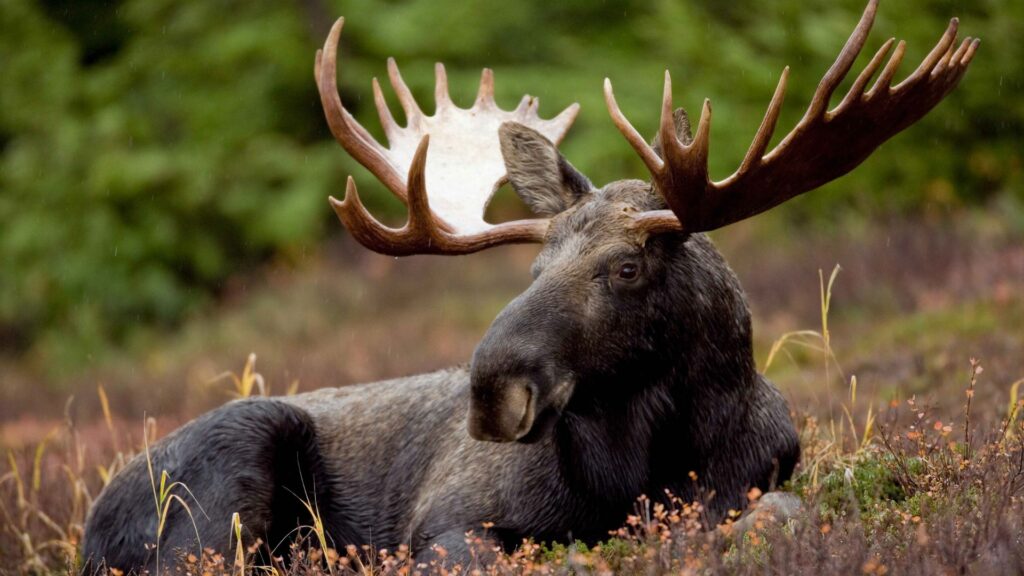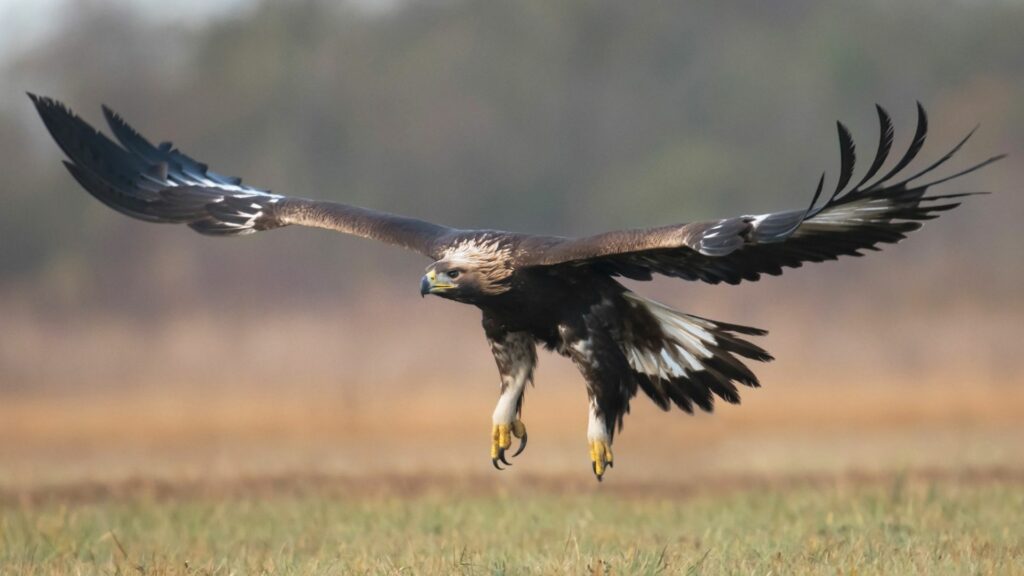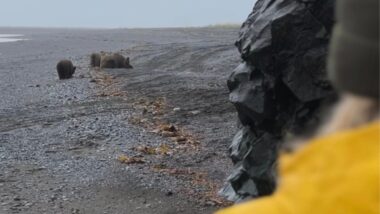Table of Contents Show
Denali National Park may be one of the most rugged and beautiful places to visit but don’t overlook its wildlife. The creatures that inhabit this incredible place are some of the best in the world.
Everyone from professional wildlife photographers to curious adventurers can have a remarkable time in this remote setting. If you want to spot them all, we’ll help make it possible.
Today, we’re taking you deep into Denali National Park to help you spot wildlife. Are you ready?
Let’s dive in!
About Denali National Park
Denali National Park is one of Alaska’s most expansive pieces of wilderness. At more than six million acres, it’s three times the size of Yellowstone National Park. While many come to set their eyes on North America’s highest peak, Denali, there’s so much more to see and experience.
While indigenous people have been here for thousands of years, European and American explorers came to the area in the late 19th century. William A. Dickey, a gold prospector, nicknamed the highest peak, Mount McKinley, after William McKinley, who later became president.
While it was a nickname for a few decades, it was officially recognized as Mount McKinley National Park in 1917. However, the indigenous people persisted in referring to it as Denali. It was until 1980 that Congress changed its name back to Denali to reflect its indigenous name.
The park’s natural beauty plays a tremendous part in its history. The incredible landscapes and towering mountains inspire visitors to keep visiting. It’s an outdoor playground for those who enjoy hiking, camping, and mountaineering. However, its rugged environment can be unforgiving to those who come unprepared.
In addition to its natural beauty, experiencing its wildlife is stunning. You can see these wild animals roaming throughout the park. With snow-capped mountains in the background, finding a better backdrop for your photos is hard.
What Is The Best Month to See Wildlife in Denali National Park?
If you plan to visit Denali National Park to spot wildlife, you’ll want to plan your trip wisely. Typically, the best time to visit the park is during the summer months of June, July, and August. The animals are typically the most active, and the weather tends to cooperate the most.
By the time June rolls around, most of the animals that hibernate have awoken from their slumber. The snow melts result in greenery and thick vegetation that attract wildlife. It’s common to see grizzly bears, moose, caribou, Dall sheep, wolves, foxes, and various bird species.
In addition, the summer months offer extended daylight hours. You’ll have plenty of time to hike and enjoy various activities, including spotting wildlife. Just keep track of time so you get plenty of sleep.
Unfortunately, while summer is the best time to visit, it’s also the busiest. The amount of time you have to explore Alaska is very narrow. As a result, it’s a good idea to start planning early and expect crowns and long lines at the best spots. If you can visit in early June or late August, you can enjoy the shoulder season and avoid the crowds.
Denali National Park Wildlife: How to Spot Them All
So what wildlife can you see while exploring Denali National Park? Let’s look at some of the most popular and how you can spot them.
Grizzly Bears
Did you even visit Alaska if you didn’t see a grizzly bear? These massive creatures wake up from slumber in June, July, and August.
When they do, they’re hungry and ready to eat. For the best chances of spotting a grizzly, explore areas near bodies of water, especially where salmon runs are active.
If you want to increase your chances of spotting grizzly bears, chat with park rangers. They’ll often be able to provide the most recent sightings.
However, you better have binoculars or a telephoto lens. You don’t want to get any closer than you have to. They’re bigger, faster, and stronger than you. Don’t test your luck!
One of the most popular spots to spot grizzly bears is Savage River Area, Teklanika River, and Stony Hill Overlook.
However, you can’t go wrong with Eielson Visitor Center, which has telescopes to help visitors spot wildlife.

Moose
Moose are another incredible wildlife that visitors can enjoy in Denali. Despite being herbivores, these massive creatures can be very dangerous. As a result, you should observe them from a safe distance.
Moose sightings are most common during the summer months of June through August. They generally hang out in low-lying areas, wetlands, and river valleys.
If you’re hiking in these areas, watch for tracks and droppings. There’s a good chance you can spot them near vegetation lines in the early morning and late afternoon hours.
Sign up for a Tundra Wilderness Tour, which is five to five and a half hours long. It may be costly, but it’s an excellent way to spot wildlife, including moose.
Your expert guide will take you to some of the best spots throughout the park for wildlife viewing. These can include the Savage River, Teklanika River, and Kantishna Area. Cross your fingers, and with some luck, you’ll get to spot a moose.

Caribou
Spotting a herd of caribou will have you thinking you left Denali and made your way to the North Pole. These large creatures walk with confidence over the tundra and other high-altitude environments.
If you see one, there are likely many more nearby. They’re most active in the early morning and late afternoon hours.
For the best chances of spotting caribou, visit Eielson Visitor Center, Wonder Lake, and the Toklat River Area. Additionally, they’re one of the most popular animals spotted during the Tundra Wilderness Tours.
If you are still looking for them, chat with a ranger and see if they can point you toward their seasonal migration routes. They often move throughout the park based on the year.

Dall Sheep
The Dall Sheep of Denali National Park is another popular animal. You can typically spot them and their distinctive white coats and curved horns at higher altitudes.
Look along rocky outcrops during summer, especially from late May to early September. They’ll frequent alpine sections of the park that provide plenty of grazing opportunities.
Some of the most common areas for sightings include The Polychrome Overlook and Eielson Visitor Center. You will stand the best chance if you have binoculars or a telephoto lens.
They’ll often blend into the surroundings, making it hard to spot them from a distance. You’ll stand the best chance if you can be patient and spend time near the slopes and cliffs at higher elevations.

Wolves
The gray wolves of Denali National Park are elusive creatures that can be challenging to spot. Their high level of intelligence and predatory skills make them hard to find. However, while sightings are rare, there is a chance of spotting one.
They’re social animals that enjoy traveling in packs. You’re most likely to spot them traveling June through August.
Because they’re so elusive, your best bet will be to take advantage of one of the ranger-led guided tours. Your guide will likely know the best places to look and have insights into the most recent sightings.
However, watching for scat and tracks can help point you in the right direction.

Red Foxes
The red foxes of Denali National Park are another visitor favorite, but they’re not easy. You’ll want to look in open areas, meadows, and grasslands while they’re searching for food.
If you’re quiet, you’ll come upon one foraging for rodents, insects, and other small prey.
They’re most active during the early mornings and late afternoons along Denali Park Road. Sign up for the Tundra Wilderness Tour or stop at the scenic overlooks and rest stops.
Your best chance will be anywhere with a sweeping landscape view, which is best for spotting wildlife.
You’re going to need to remain as quiet as can be. Additionally, it’s going to require a healthy dose of patience. They’ll hide for long periods if they detect a threat. If you spot a red fox, it’s likely hunting for food, so keep your distance.

Golden Eagles
While all the other creatures on our list are on the ground, the Golden Eagle soars high above Denali National Park. You can spot these eagles throughout the year, but they’re most common from June through August.
They’re frequently in open areas, near cliffs, and rocky outcrops. They’ll use rocks as a perch to keep their sharp eyes out for their next meal.
If you get lucky enough to see them swoop down and catch a bite to eat, they’re one of the most agile birds in the skies. They can pinpoint small mammals and birds with laser-like focus.
They’ll swoop down over the Polychrome Overlook or Savage River Loop. Keep your eyes on the skies if you want to see them soaring through the skies.

Tips for Seeing Denali National Park Wildlife
Now that you know what you’re looking for, here are some tips to help maximize your time and energy. Since time is of the essence, you’ll want to make the most out of every second.
Take a Wildlife Tour
The wildlife tours the park offers may be costly, but they’re worth it. They’ll take you to some of the most popular spots for seeing wildlife. You won’t have to drive around hoping to spot something. If you do spot something, you’ll have experts to provide insights and information into what you’re seeing.
Park officials offer two types of tours, the Natural History Tour and the Tundra Wilderness Tour. If you want to see as much wildlife as possible, the Tundra Wilderness Tour is for you. However, as we mentioned, these are costly.
The price is $114 for the Natural History Tour and $141 for the Tundra Wilderness Tour. Those 15 and younger get a discount and only pay $49.50 for the Natural History Tour and $63.25 for the Tundra Wilderness Tour.
Bring Binoculars and Cameras
Getting too close to wildlife can be extremely dangerous for you and the animals. As a result, the best way to spot them is to bring binoculars or a camera.
You can use these zoom features to capture the beauty of the landscapes and any wildlife you encounter inside Denali National Park.
Sometimes the best way to use these is to focus your binoculars on the distance. Scan the horizon in meadows and other areas. How many moose and other grazing animals you can spot with them might surprise you.
While binoculars are great, we enjoy capturing pictures of what we see. As a result, having a quality zoom lens, a full battery, and an empty SD card is essential if you bring a camera. You can use your lens to get an up-close look and capture stunning pictures of the wildlife you see.
Stay Quiet
Many of the wildlife in Denali National Park have hearing abilities that are exponentially better than humans. As a result, remaining quiet is essential if you want the best chance of spotting wildlife.
This is why it’s crucial that you get out in the morning and later in the evening. During these times, fewer crowds of noisy tourists are on trails and throughout the park.
If you want to see wildlife, stay as quiet as possible. Making noise will likely cause them to keep their distance or move in the opposite direction before you can see them.
It doesn’t matter whether you’re hoping to see a red fox or a massive moose. Keep yourself and anyone hiking with you as quiet as you can.
Be Patient
Unfortunately, spotting wildlife in Denali National Park will take tremendous patience. It could take hours upon hours of sitting quietly for you to spot some animals.
While it may require patience, it’s worth the wait when you get to see wildlife in action.
Whether it’s an eagle soaring above you or a momma bear walking her cubs across the road, it will likely require patience. Watching nature respond in a completely natural way is always impressive.
It can be an incredible experience to see them and know that they’re truly in the wild and that it’s not a zoo.
Drive the Park Road
Denali Park Road is a 92-mile stretch of highway that runs directly through the park. However, passenger vehicles are only able to access the first 15 miles. Once you reach this point, you must use the park’s shuttle or guide services.
This road provides some of the best opportunities to explore the park. You can see a variety of habitats and wildlife along pullouts and overlooks. However, as we said, patience is critical. Take your time to use your binoculars along the road and look off in the distance.
Keep Your Distance
As with any national park, the wildlife you spot in Denali National Park is wild. They’re not trained, it’s not a zoo, and they are very real.
Don’t make the mistake of thinking that you can approach them to take a selfie for your followers on Instagram.
Park officials generally encourage guests to stay at least 100 yards from dangerous animals like bears and wolves. They’re quick, strong, and can do severe damage in the blink of an eye.
Additionally, you should keep 25 yards between you and moose, caribou, and just about any other animal in the park.
When you get too close, you do yourself and the animals a disservice. We’ve seen visitors make the mistake of feeding wildlife. This causes wildlife to begin to see humans as a food source.
They can become aggressive and lose their natural abilities to hunt for their actual food. Whatever you do, keep your food and distance away from them.
Spot Wildlife While Visiting Denali National Park
Exploring Denali National Park and spotting wildlife is an unforgettable experience. If you can see a massive grizzly bear walk by or a majestic eagle soar above, you’ll never forget it.
While it can be tempting to capture that perfect shot, there’s something special about soaking it all in with your eyes. No number of likes on Instagram can top that.






